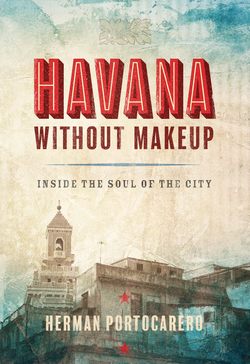Читать книгу Havana without Makeup - Herman Portocarero - Страница 13
На сайте Литреса книга снята с продажи.
Оглавление6.RUMBA
On Sunday afternoons, the neighborhood of Calle Aramburu – a side street of San Lázaro near the University – organizes a rumba. Over the years it has become a tourist attraction, but it has kept some of its original raw energy.
The neighbors gather in an extended patio along the workshop of the painter Salvador. This is an expanded version of a solar, an urban “yard” around which habaneros in poor neighborhoods organize their daily lives. These solares are not only like village squares used for communal activities, they also serve as spontaneous temples for the discreet practice of ancestral rites. Salvador has decorated his space with exuberant Santería themes.
The rumba performed here has been watered down to a concert, but remains close to what in Santería is called a tambor or toquesanto, a drum-session intended to invoke the spirits to allow the initiated to identify with them in a state of trance. The rumberos, whether commercialized or not, play both the vertical congas and the horizontal tambores batá, a set of three drums placed on the knees and played at both ends. These were originally sacred instruments, meant to invoke the ancestors, and are always handled with special care and ritual. The conga is also a popular instrument in pop and jazz, but here it’s played with such virtuosity that a mediocre Cuban congero is likely to give even the experienced American or European player an inferiority complex.
In the 1920s, Fernando Ortiz started to participate in such rumbas when they were still completely authentic, and when few, if any, white Cubans of his social class did so. He later commented with self-deprecating humor on the reactions of the participants when he roamed the often still semirural neighborhoods around Havana in search of active solares: What’s this white boy up to? Is he after the girls? (“Qué se traerá ese blanquito . . . atraído por las hijas de la Virgen de Regla más que por los cultos . . . ?”)
Let’s see what he saw, and where it came from.
